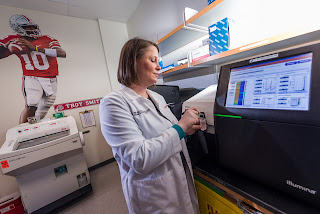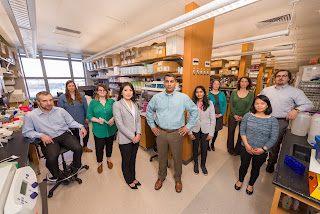Breaking it Down: Computational Biology
The last—and perhaps most complex—side of the Roychowdhury lab team is our computational biologists. Our clinic team and wet lab scientists encompass the more traditional, well-known parts of cancer research. However, as we have already learned, our team here at The Ohio State University works to surpass traditional approaches and build a diverse team to tackle one of the world’s most difficult obstacles. In computational biology, data are king. With the advancements in technology of the past few decades, computers are increasingly capable of analyzing more complex sets of data and interpreting them for countless purposes. In previous discussions, we’ve encountered our lab’s sequencing instruments, which are used to assess each patient’s DNA to effectively identify alterations present in his/her cancer. These large data sets of patient DNA are analyzed through computational biology programs—known as pipelines—where our team can simplify the literally billions of molecules (As, Cs...





